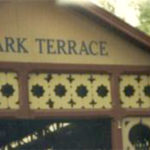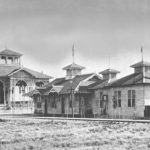LAKE PARK TERRACE
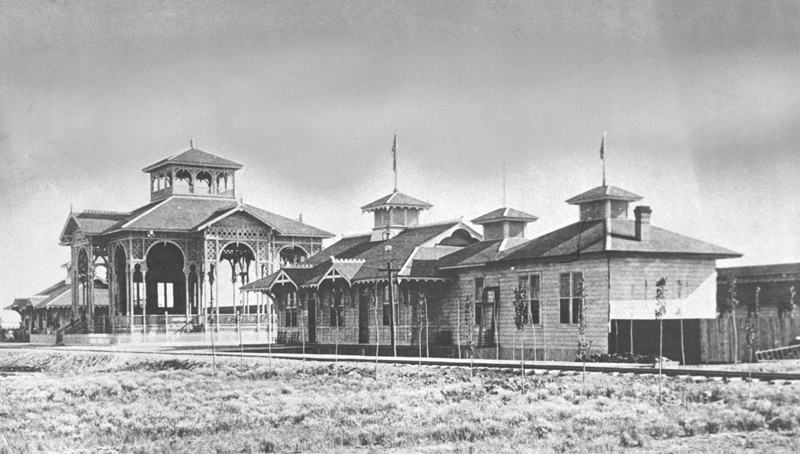
Lake Park opened on the shore of the Great Salt Lake in 1886. Ten years later, some of the buildings were moved inland to Farmington. The main attraction then was the large, open-air Dancing Pavilion which was designed by Richard Kletting, who was also the architect of the Utah State Capitol, the original Saltair and even helped with the famous Sacré-Cœur in Paris, France.

The Dancing Pavilion was shortened when it came to Lagoon, as you can see by comparing it in the two photos above. In 1906, a new Dancing Pavilion was constructed near what is now the main entrance of the park. By 1911, the original Lake Park Dancing Pavilion was taken apart and rebuilt using the same lumber, latticework and other materials. The cupola was retained and used as a separate building (now the Rose Terrace).

It was the Skating Rink for a while and then became the Lake Park Terrace until 2004. After that season, it was demolished and The Bat was built in its place.

ROSE TERRACE

The Rose Terrace is the cupola from the Lake Park Dancing Pavilion, making it the only structure that has been a part of Lagoon since its beginnings at Lake Park. It’s been relocated a time or two since it was removed from the Dancing Pavilion and at one time it was referred to as a tea room.
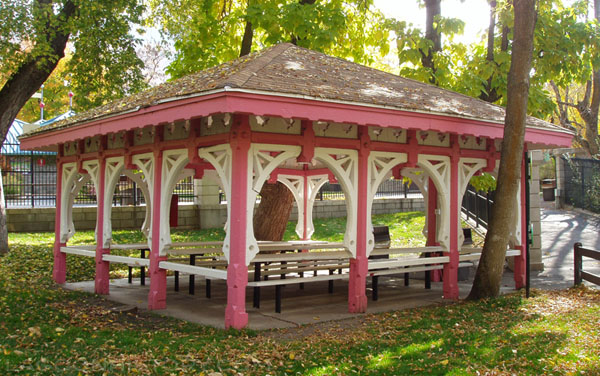
It’s been located in its current location for a few decades now. Around 2007 the lawn around it was replaced with concrete and a new concrete foundation was built for the Rose Terrace.
THE BOWERY
At 10,000 square feet, this was the main luncheon pavilion at Lagoon when it opened in Farmington in July 1896. Over time the building has had a variety of different uses and portions have been rebuilt or remodeled at different times. The biggest change was probably in 1968 when Opera House Square opened, with different restaurants and shops built into the north side of the building. Today it houses a Subway, Arby’s and the employee kitchen along with a few midway games.
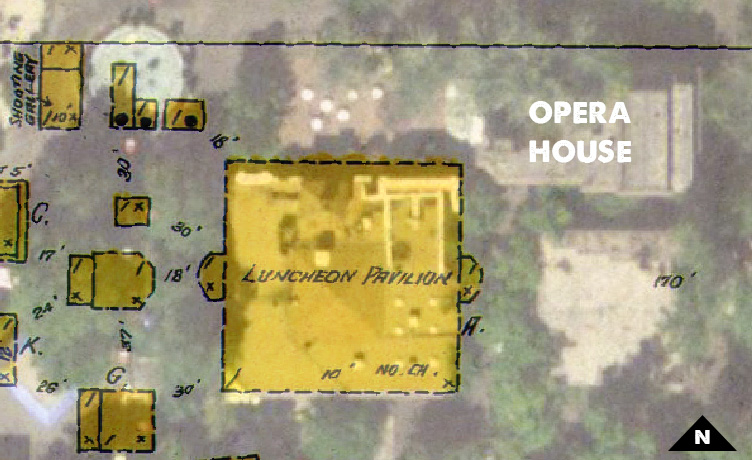
BEACH TERRACE
The Beach Terrace was one of the bigger covered picnic areas in the middle of the 20th century. It was located about where the western half of Bombora is now. The building is shown on a 1949 map, but it could’ve been around much longer than that. The Beach Terrace was removed around the time Lagoon-A-Beach opened in 1989, but could’ve existed at the same time for a year or two.
ARBOR TERRACE
Most likely built in the 1940s or ’50s, the Arbor Terrace was probably named for the many arbors that were in this part of the park in its early days. It was located between the Maple & Oak Terraces and replaced around 2007 by a sheltered serving area for the park’s Group Food Services.
MAPLE TERRACE
Also built in the 1940s or ’50s, this was originally an odd-shaped, wood structure. In 2006 it was replaced by a new, rectangular, steel structure, making room for the addition of the Pine Terrace. During Frightmares, the Maple & Pine Terraces are repurposed as the Nightwalk haunted walk-through.
OAK TERRACE

Constructed around the same time as the Maple & Arbor Terraces, the Oak Terrace was also a wood structure and had a small stage on the west side. It was torn down and replaced with a steel structure in 2007 or 2008. The Oak Terrace becomes Malevolent Mansion in the fall.

MORE FROM LHP

SOURCES
Farmington Fractions. Davis County Clipper, 10 Jul 1896.
Hess, Margaret Steed. My Farmington: A History Of Farmington, Utah: 1847-1976. Helen Mar Miller Camp. Farmington, Utah, 1976.


